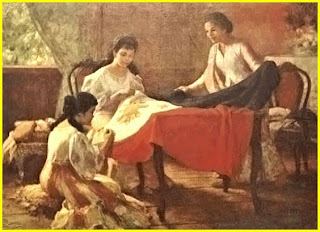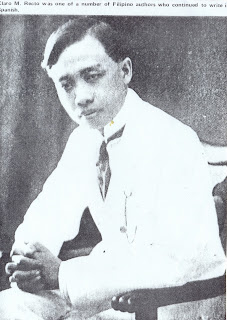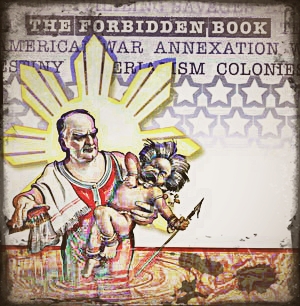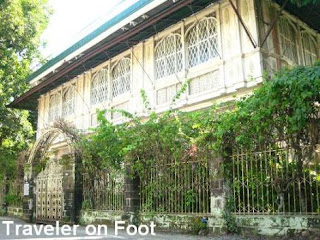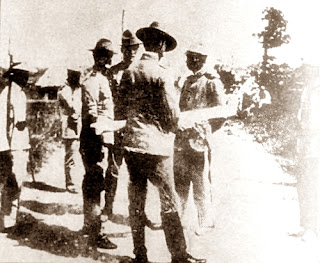 |
| Katipunan initiation rites |
1848 - Ramon Basa, future Filipino revolutionary martyr and second president of the underground society-turned-revolutionary-government Kataastaasang, Kagalanggalangang Katipunan nang manga Anak nang Bayan (KKK), is born; while a clerk at the marina comandancia, he will be recuited by townmate Ladislaw Diwa and be initiated into the Katipunan on November 9, 1892; Basa will succeed Deodato Arellano as head of the KKK around February 1893 when Katipunan co-founder and future "Father of the Philippine Revolution," Andres Bonifacio y de Castro, realizing the need for a more effectual leader, decides to intervene and forge a reorganization within the anti-colonial movement; Basa himself will be replaced around 1894, yielding the Katipunan leadership to Bonifacio supposedly over his disagreements with the latter on the matter of having initiation rites, Bonifacio's handling of the society's funds wherein money is lent to needy members no matter that they come complete with promissory notes, and his refusal to have his son inducted into the Katipunan; Basa, native of San Roque, Cavite, will be arrested following the outbreak of the Himagsikan and become one of the so-called 13 Martyrs of Bagumbayan that
the colonial authorities will forcibly march to and publicly execute in
Bagumbayan (future Luneta) in Manila during the waning years of the despised Spanish rule in the
Philippine archipelago.
Photo credit:
http://homebodyhubby.files.wordpress.com/2008/08/katipunan-initiation-rites-1892.gif











